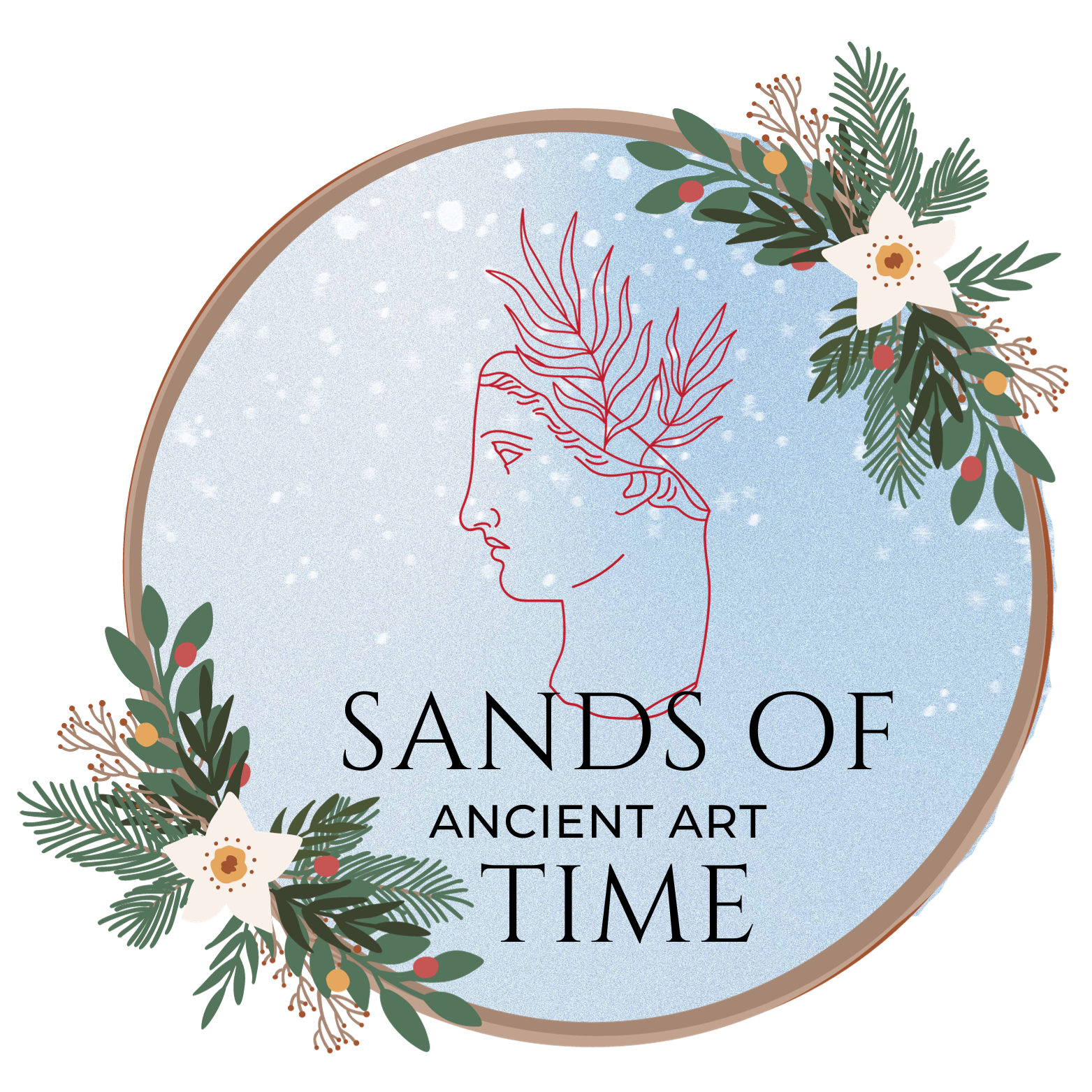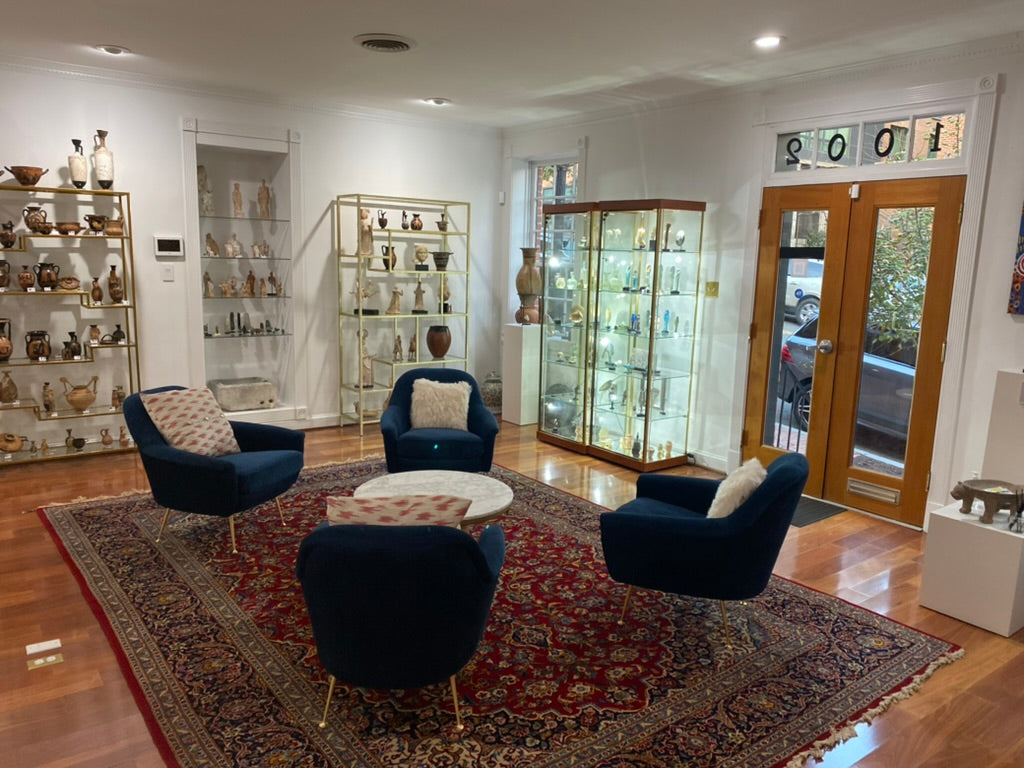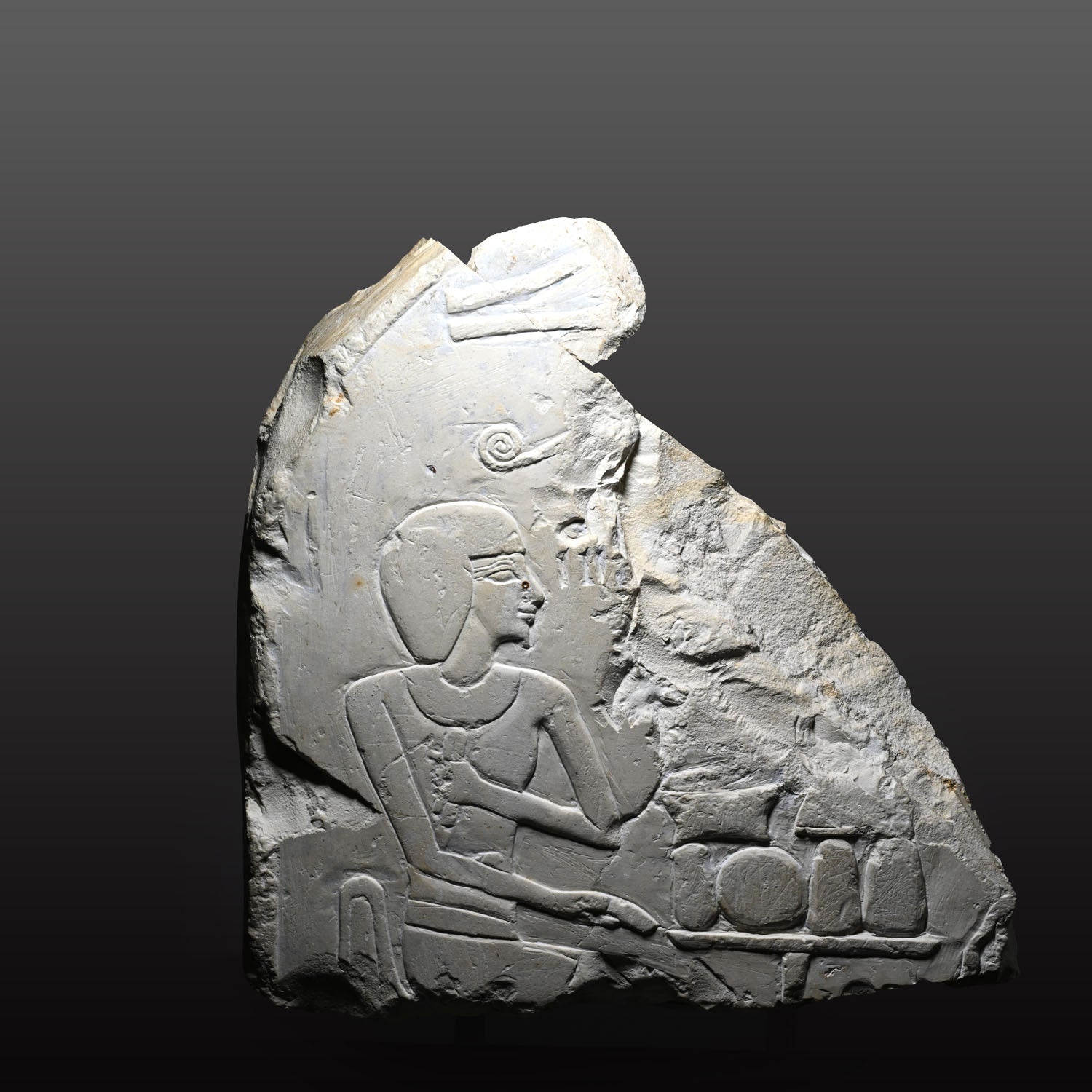
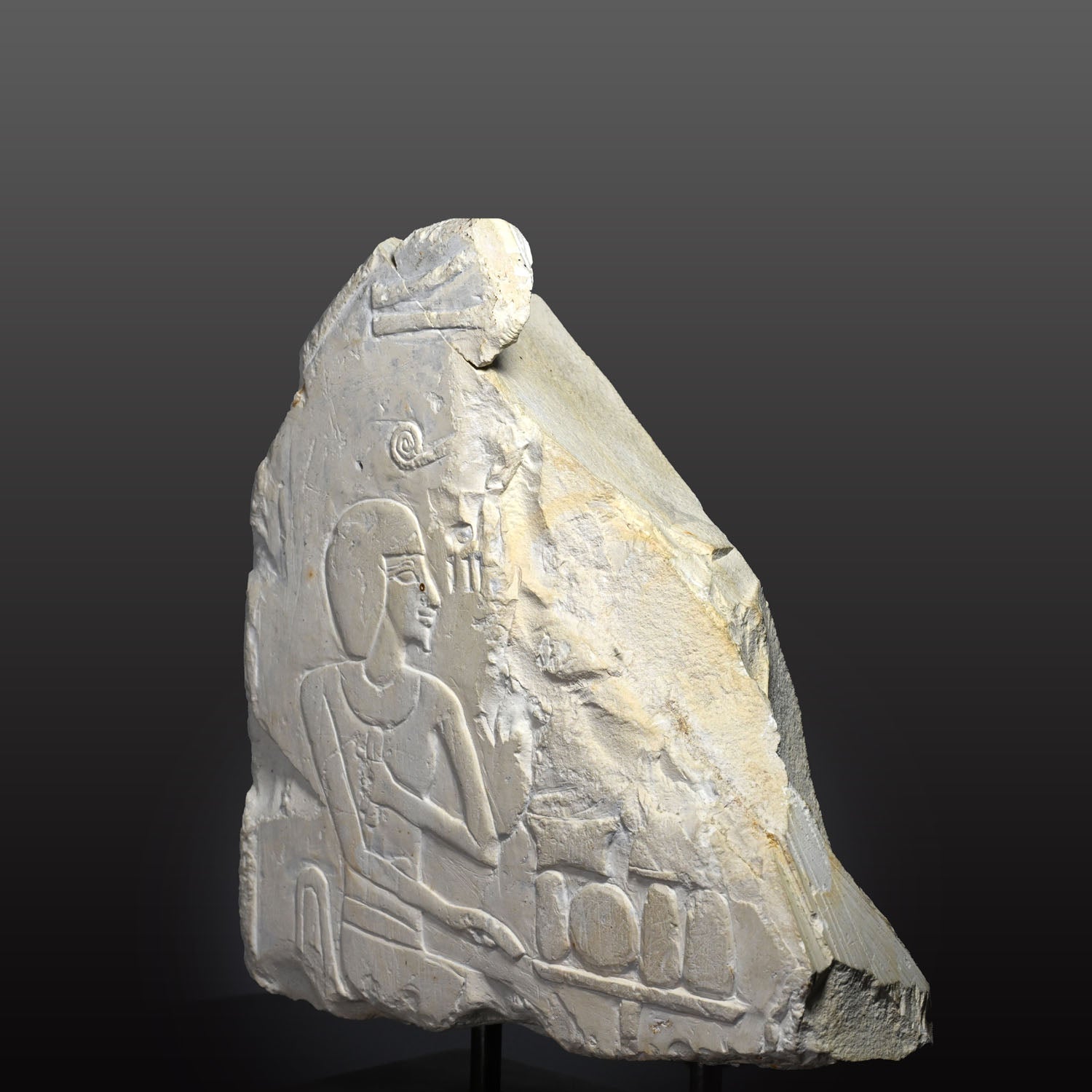
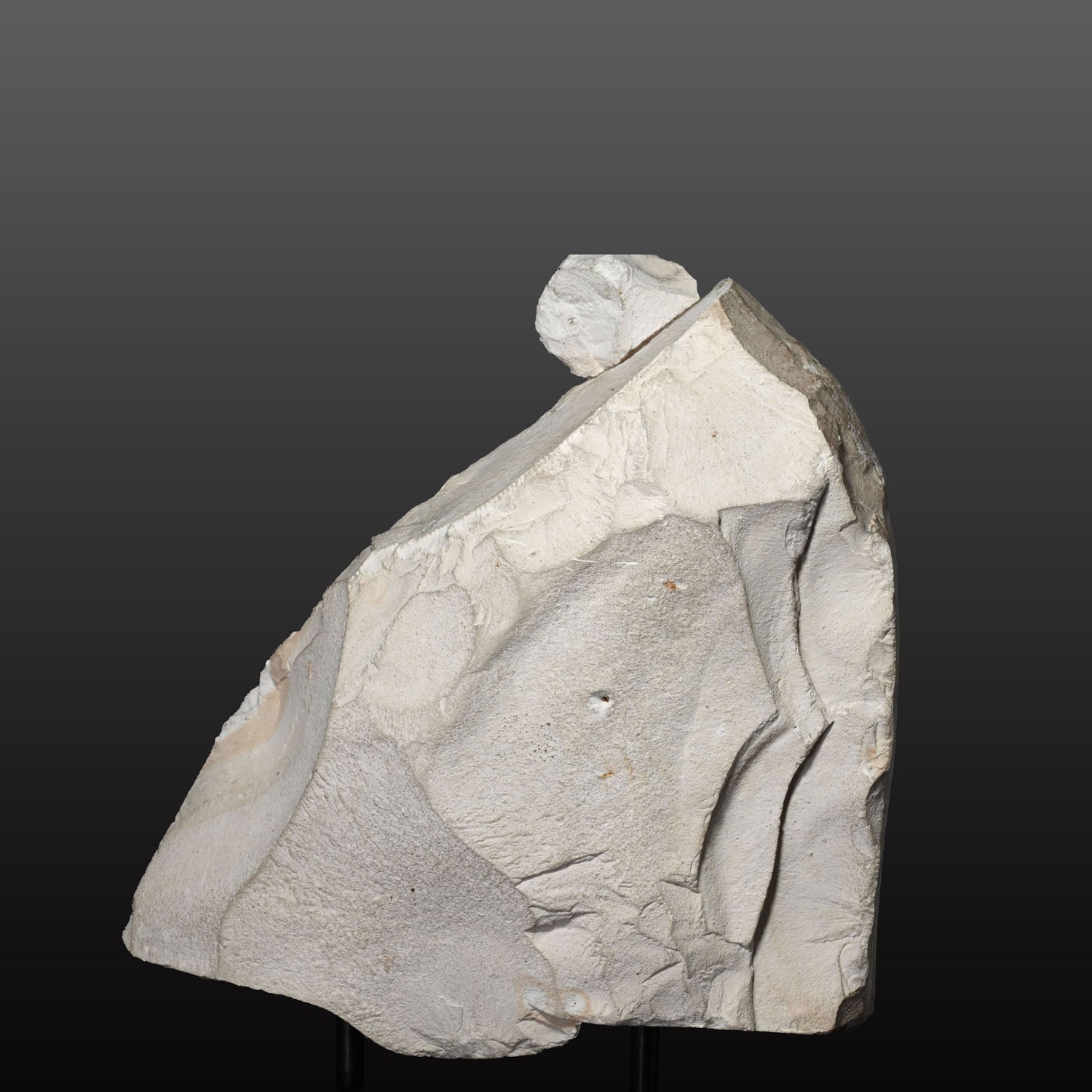
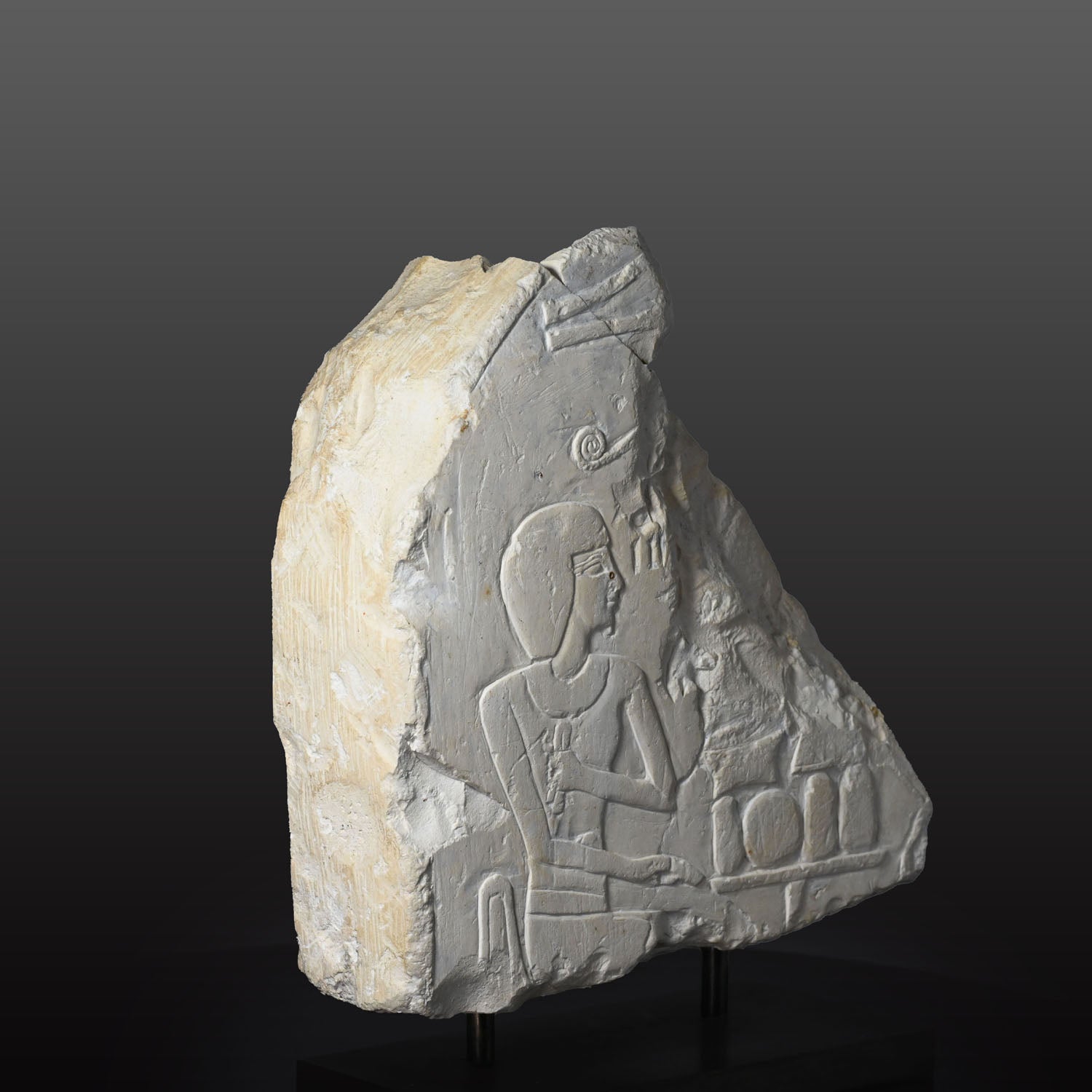
An Egyptian Limestone Stele Fragment, New Kingdom, early 18th Dynasty, Reign of Ahhotep I (c. 1575-1530 BCE) - Amenhotep I (c. 1525-1504 BCE)
This object qualifies for free USA shipping and a flat rate fee of $75 if shipping internationally.
This finely carved fragmentary upper section of a New Kingdom limestone stele depicts a deceased male figure seated before an offering table, participating in a traditional funeral banquet. He is dressed in a short wig, collar, and kilt and is positioned on a backrest in front of the offering table, which is adorned with numerous offerings. His right hand is extended toward the offerings, while his left hand, placed across his chest in a symbol of rebirth, holds a folded bolt of white linen. Linen represents purity and eternal life, underscoring the stele's function as a lasting invocation for remembrance and ritual nourishment.
The items have been arranged vertically atop the offering table to clearly display each type of food being offered. In this fragment, only the round and conical loaves of bread are visible; however, there would typically be other offerings, such as fruits, vegetables, and beverages like beer or wine. Food and drink offerings were common on these tables as they symbolized the nourishment provided to the deceased in the afterlife.
Above the scene is the remains of a large udjat (healing eye) symbol, further emphasizing the connection to protection and health in the afterlife. The fine quality of the carving reflects the sophisticated artistry of the 18th Dynasty.
On stele type see: S. Guichard, Jean-François Champollion, Notice descriptive des monuments égyptiens du musée Charles X (Paris 2013), pp. 322-323 (N 234-C 83).
A. Grimm / S. Schoske (eds.), In the Sign of the Moon. Egypt at the Beginning of the New Kingdom. Writings from the Egyptian Collection. Volume 7 (Munich 1999), cat. 46 and 47
Medium: Limestone
Dimensions: Height: 6 1/4 inches (16 cm)
Condition: Fragmentary as described, featuring well-preserved relief carving, the surface with minor chips and losses consistent with age, that do not detract from the overall quality. Traces of the original polychrome remain visible.
Provenance: Private German collection, acquired in 1980 from the Faust Art Gallery in Cologne.
QUESTIONS? Just click the Contact Us tab on your right.
We ship Tuesday to Friday with FedEx and usually same day if your order is received before 2pm. Within the continental USA, packing, shipping and insurance is free. Depending on size and destination, delivery times range from one to five business days.
For overseas shipments we charge a small flat rate which includes packing, preparation of all customs paperwork, insurance and carrier fees in compliance with all USA and International customs requirements.
Overseas shipments are sent via FedEx, DHL, or UPS International Priority, so contact us if you have a shipping preference. International customers are responsible for all duties and taxes.
Sands of Time provides a lifetime, unconditional guarantee of authenticity and provenance. Every object you purchase from us is accompanied by a Certificate of Authenticity, stating culture, provenance, and age.
Furthermore, we conduct due diligence to ensure the item, to the best of our knowledge, has not been illegally obtained from an excavation, architectural monument, public institution, or private property. Wherever possible, reference is made to existing collections or publications.Wherever possible, reference is made to existing collections or publications.
选择选项




